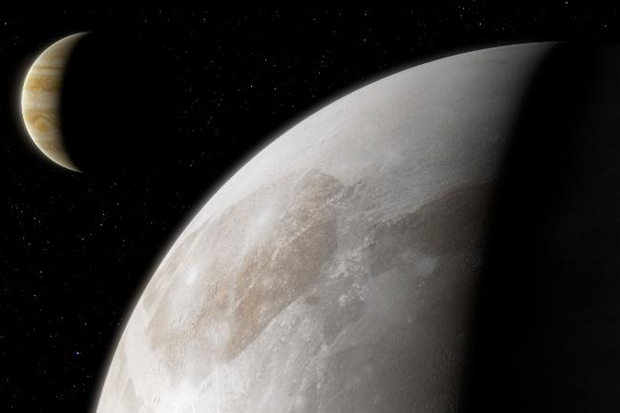Astronomers discovered this water vapor using a combination of new observations and archives from Hubble. Their findings were published Monday in the journal Nature Astronomy.
READ: Scientists predict Europe’s volcanoes have alien life
Previous research has shown that Ganymede – the ninth largest object in our solar system – contains more water than all of Earth’s oceans, even though the moon is 2.4 times smaller than our planet.
Ganymede Moon very cold, with temperatures that can reach minus 184 degrees Celsius, so the surface is like an ice shell. About 161 kilometers beneath this shell is likely a saltwater sea. And the researchers knew it was impossible for the oceans to evaporate through the ice shells to create water vapour.
In addition to being the largest natural satellite in our solar system, Ganymede is also the only moon that has a magnetic field. This causes the aurora to shine around the moon’s north and south poles.
Hubble captured the first ultraviolet image of Ganymede in 1998, revealing this band of aurora. Initially, the researchers believed that the aurora was caused by a pure oxygen atmosphere, which was first detected using the same telescope in 1996. But some of the features were unexplained and even appeared slightly different from each other.
READ ALSO: Trace HP Numbers in a Very Easy Way
The European Space Agency’s JUICE mission, or JUpiter ICy moons Explorer, will launch in 2022. It will arrive in Jupiter in 2029 and spent three years observing the giant planet and its three largest moons, including the moon Ganymede.
“Our results can provide the JUICE instrument team with valuable information that can be used to fine-tune their observation plans to optimize the use of the spacecraft,” said study lead author Lorenz Roth, a researcher at the KTH Royal Institute of Technology in Stockholm, in a statement.
(es)
– .


